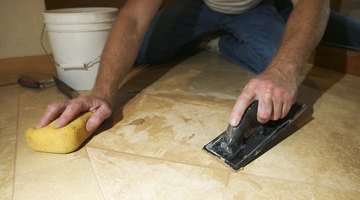How to Estimate Masonry Work
Estimating masonry is a big job that covers lots of little jobs. Masonry work includes blocks, bricks, tiles, stone and clay. Masonry estimating must also take into consideration wall reinforcement, mortar, cement, lintels and flashing.

It can be a difficult job and you should always be prepared for your estimate to be a little over or a little under. For this reason it makes economic sense to build a 10-percent cushion to your final estimate.
-
Prepare for estimating brick wall masonry by knowing the length and height of the proposed wall. Multiply the quantity of materials that you need per square foot by the net wall areas. Calculate the gross wall area based and then deduct for any gates or other openings that may be required to get the net wall area figure.
-
Make a drawing representing the relative square feet figures of the wall surface to determine the number of bricks that are required.
-
Work into your estimate the number of straight walls, pilasters and other items that may be needed to complete the wall. Add this to the calculated estimate of the number of bricks to be used.
-
Add in the cost of mortar, cement and any tools that must be bought in order to make a final estimate of the masonry cost of building a brick wall. Determine net quantities of the materials before you add in allowances for things like broken bricks. Generally, it is best to add a 5 percent cushion for brick and a 15 percent cushion for mortar.
The Drip Cap
- Estimating masonry is a big job that covers lots of little jobs.
- Masonry work includes blocks, bricks, tiles, stone and clay.
- Make a drawing representing the relative square feet figures of the wall surface to determine the number of bricks that are required.
References
- "Modern Masonry;" Clois E. Kicklighter; 1980
- "Estimating in Building Construction;" Frank R. Dagostino; 1993
Writer Bio
Timothy Sexton's more than 10,000 articles have been published on sites ranging from USA Today to CareerAddict, from PopEater to TakeLessons.com. His writing has been referenced in books ranging from "The Reckless Life...of Marlon Brando" to "Brand New China: Advertising, Media and Commercial and from Scarface Nation to Incentive!"
Photo Credits
- Thinkstock Images/Comstock/Getty Images
- Thinkstock Images/Comstock/Getty Images
More Articles



